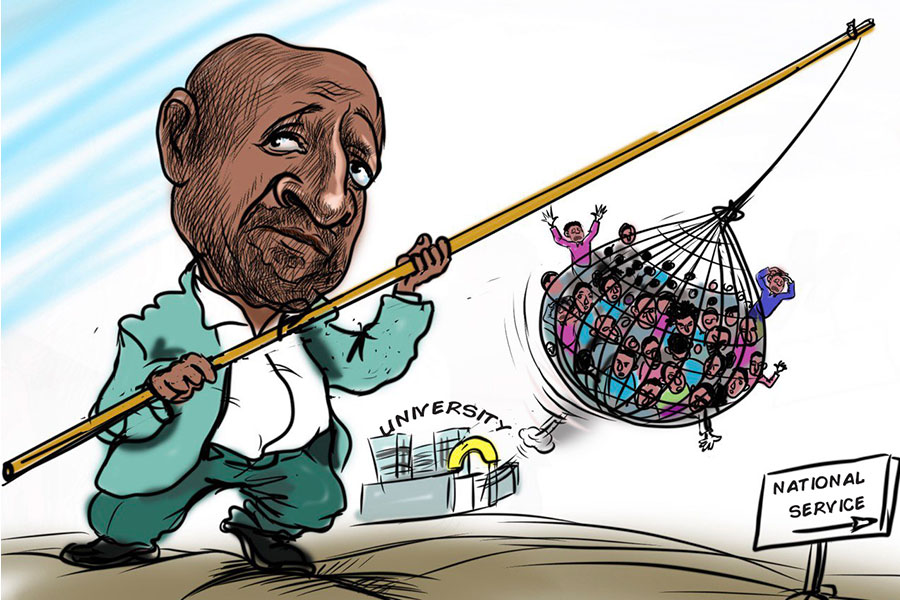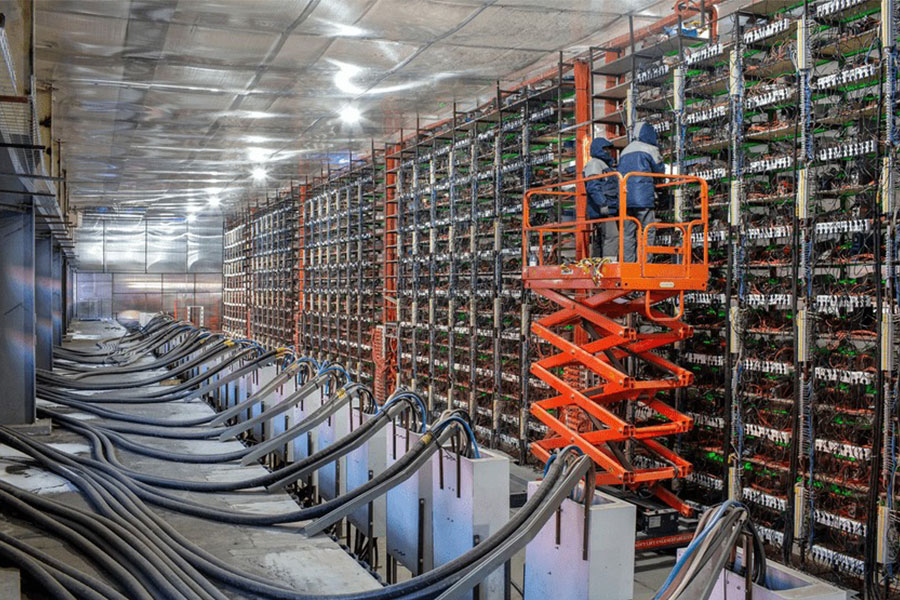
Commentaries | Sep 06,2020
May 18 , 2024
By Keun Lee
I recently discussed industrial policy at the International Monetary Fund (IMF). The IMF has historically been a sharp critic of industrial policy. However, as many of its client countries embrace the concept, the Fund has recognised the need to clarify its position and update its guidance.
IMF economists have long worried that industrial policy can cause undue harm to a country’s fiscal position. But, while some industrial policy tools do demand significant fiscal resources, others do not. For example, entry control costs very little when the government permits only a certain number of qualified firms to operate in strategic sectors.
The logic behind entry control is simple: a few firms earning profits in an oligopolistic market is better than many firms reaping no profits in perfect competition, not least because profits can be re-invested in the selected firms. The policy also causes the rate of return to exceed interest rates – good for boosting private investment in manufacturing, which typically offers lower rates of return than services, with longer time horizons.
Entry control can be effective when an emerging economy with limited market size, resources, and technological capabilities seeks to enter new sectors and initiate new projects. But, the government must choose firms wisely – accounting for factors like plans to import or license necessary technologies and to collaborate with other partners – and arrange financing. Entry control has been successfully implemented in China, Japan, and South Korea (where, for a time, only two or three firms were permitted to produce automobiles or provide wireless telephone services).
Local content requirements, which oblige manufacturers to source a certain share of the final value of a product domestically (the localisation rate), also have limited fiscal costs. Such requirements can support job growth, boost domestic value-added, and contribute to upgrading critical industries. That was the case for China’s wind turbine industry, which Danish firms dominated until China’s government introduced a set of supportive policies, including local content requirements, in the 2000s. Within a decade, domestic firms accounted for almost 90pc of the Chinese wind turbine market.
China also implemented local content requirements in its automotive sector, rewarding higher localisation rates with lower import tariffs. Imported parts and components of final goods with localisation rates of 40pc to 60pc were subject to a 75pc tariff, compared to a 60pc tariff for goods with 60pc to 80pc localisation rates.
But, local content requirements violate World Trade Organization (WTO) rules; China had to reverse them before its 2001 WTO accession. To help cushion the blow for local component manufacturers, which now faced greater competition from foreign firms, the government introduced new tariffs on imported parts and components. As a result, localisation rates have continued to increase among leading automotive manufacturers in China, reaching some 80pc in the 2010s.
Malaysia also achieved some success with local content requirements – which helped to increase domestic firms’ share of the small-car market from 30pc in 1992 to 60pc in 1996 – before reversing them in 2004. Thailand tried something similar, but had to abolish the policy prematurely, at the WTO’s request; its full potential was not reached.
Local content requirements appear to be coming back—most prominently, in America’s recently introduced industrial policy, the Inflation Reduction Act (IRA). China has filed a complaint at the WTO about the IRA over what it claims are discriminatory subsidies that favour domestic producers. Given the WTO’s record of forcing countries to roll back local content requirements, especially those accompanied by subsidies, its handling of IRA-related disputes will be telling.
Import tariffs protecting nascent industries are a third industrial policy tool worth mentioning. Whether tariffs are effective depends significantly on which metric one considers. For example, one study found that tariffs reduced total-factor productivity in South Korean industries from 1963 to 1983. But, others, including Korea, show that tariff protection did boost Korean firms’ export volumes and enable them to expand their market share over roughly the same period (1967-1993).
This is appropriate. When an economy is in its earlier stages of development, productivity growth is not the primary objective. Far more important is increasing output and enabling firms to expand their market share so that they can take advantage of economies of scale, invest in technological upgrading, and create more jobs.
For example, it was thanks to high tariffs on imported cars (up to 82pc) that Hyundai was able to capture 44pc of the Korean market with its first own-brand car, the Pony, within a year of its introduction. Though the Pony was never able to compete in foreign markets – it cost 1,850 dollars in the United States, compared to 4,500 dollars in South Korea – tariff protections effectively guaranteed domestic profits, enabling Hyundai to expand and invest in research and development.
Tariff policy need not be a blunt instrument. South Korea’s asymmetric approach – extremely high tariffs on consumer goods (to protect export industries) but considerably lower tariffs on capital goods – accounted for the economy’s specific needs at the time. Government protection was linked to export performance, which meant that firms were still exposed to foreign competition. This combination of domestic market protections and discipline from world markets was one of the most essential features of Korean industrial policy in the 1980s and 1990s, not least because it ensured that late entrants still had a chance.
Industrial policy can help countries cope with growing economic and political uncertainty. But the details matter. Any IMF guidance on the issue must not only highlight fiscal prudence tools, but also emphasise the critical importance of striking the right balance between protection and market discipline.
PUBLISHED ON
May 18,2024 [ VOL
25 , NO
1255]


Commentaries | Sep 06,2020

Editorial | Apr 13, 2025

Radar | Sep 10,2023

News Analysis | Jul 03,2021

Radar | Sep 19,2020

Photo Gallery | 180016 Views | May 06,2019

Photo Gallery | 170211 Views | Apr 26,2019

Photo Gallery | 161215 Views | Oct 06,2021

My Opinion | 137240 Views | Aug 14,2021

Dec 22 , 2024 . By TIZITA SHEWAFERAW
Charged with transforming colossal state-owned enterprises into modern and competitiv...

Aug 18 , 2024 . By AKSAH ITALO
Although predictable Yonas Zerihun's job in the ride-hailing service is not immune to...

Jul 28 , 2024 . By TIZITA SHEWAFERAW
Unhabitual, perhaps too many, Samuel Gebreyohannes, 38, used to occasionally enjoy a couple of beers at breakfast. However, he recently swit...

Jul 13 , 2024 . By AKSAH ITALO
Investors who rely on tractors, trucks, and field vehicles for commuting, transporting commodities, and f...

Nov 1 , 2025
The National Bank of Ethiopia (NBE) issued a statement two weeks ago that appeared to...

Oct 25 , 2025
The regulatory machinery is on overdrive. In only two years, no fewer than 35 new pro...

Oct 18 , 2025
The political establishment, notably the ruling party and its top brass, has become p...

Oct 11 , 2025
Ladislas Farago, a roving Associated Press (AP) correspondent, arrived in Ethiopia in...

Nov 2 , 2025
The National Bank of Ethiopia (NBE) has scrapped the credit-growth ceiling that had s...

Nov 2 , 2025 . By SURAFEL MULUGETA
The burgeoning data mining industry is struggling with mounting concerns following th...

Nov 2 , 2025 . By YITBAREK GETACHEW
Berhan Bank has chosen a different route in its pursuit of a new headquarters, opting for a transitional building instea...

Nov 2 , 2025 . By BEZAWIT HULUAGER
Nib International Bank S.C. has found itself at the epicentre of a severe governance...